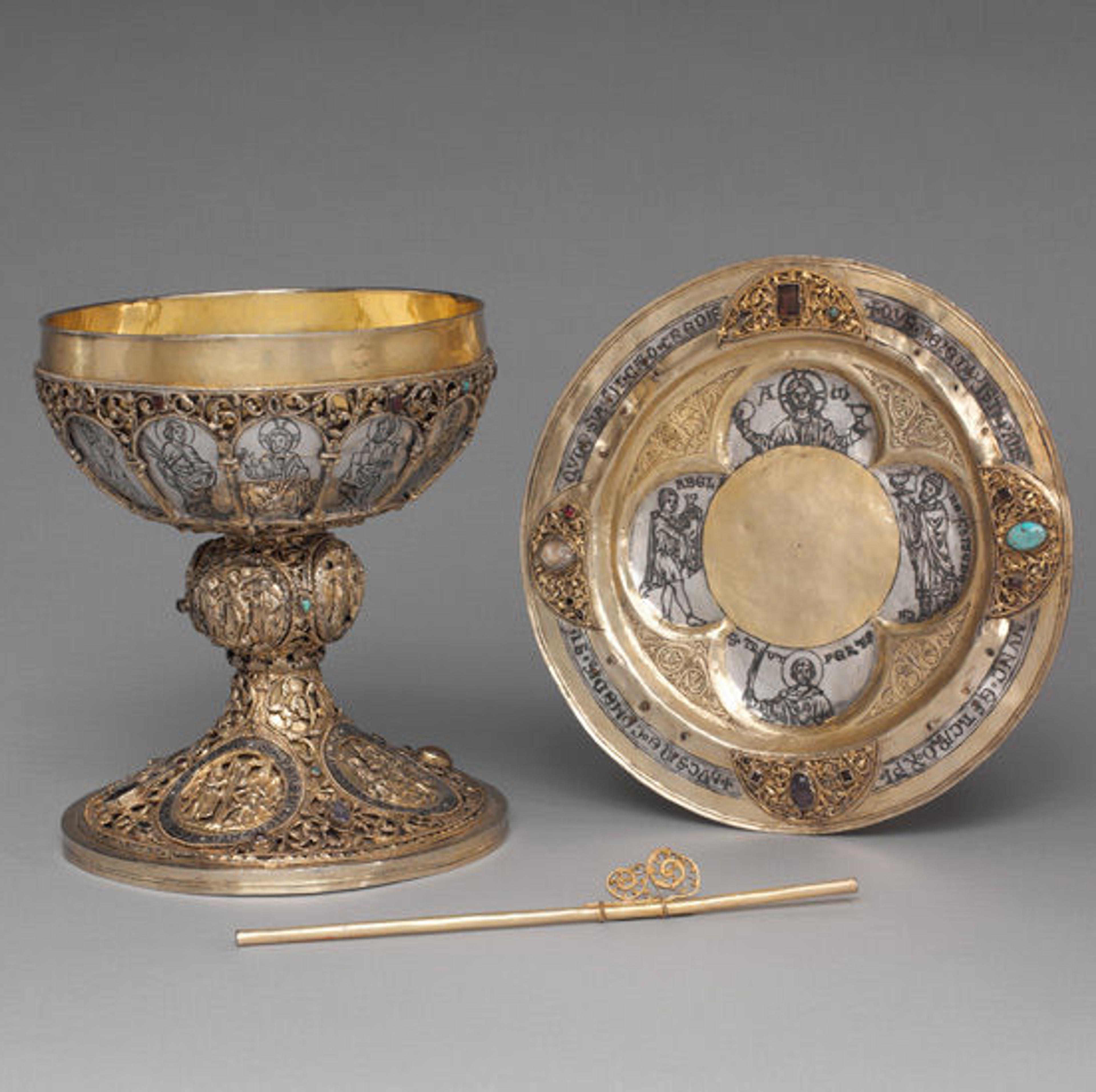
Left: James Rorimer, curator at The Cloisters, in 1967. © Yousuf Karsh. Right: The photo from art dealer Joseph Brummer's French identity card, 1920. The Cloisters Library and Archives
Today, visitors to The Cloisters museum and gardens marvel at precious works of gold, silver, and ivory in the Treasury. But this richly furnished gallery was not part of the original design of The Cloisters. It owes its inception to two individuals: Museum Curator James Rorimer and the art dealer Joseph Brummer.
Joseph Brummer's original ambition was to be a sculptor. Indeed, he moved to Paris from his native Hungary around 1906 and attended Henri Matisse's Académie Matisse. He may also have worked for the French sculptor Auguste Rodin. By 1909, Brummer had gained some experience selling works of art to supplement his income and was able to set up a gallery with a partner. By 1912, the gallery bore the name Brummer Frères and included his brothers Ernest and Imre.
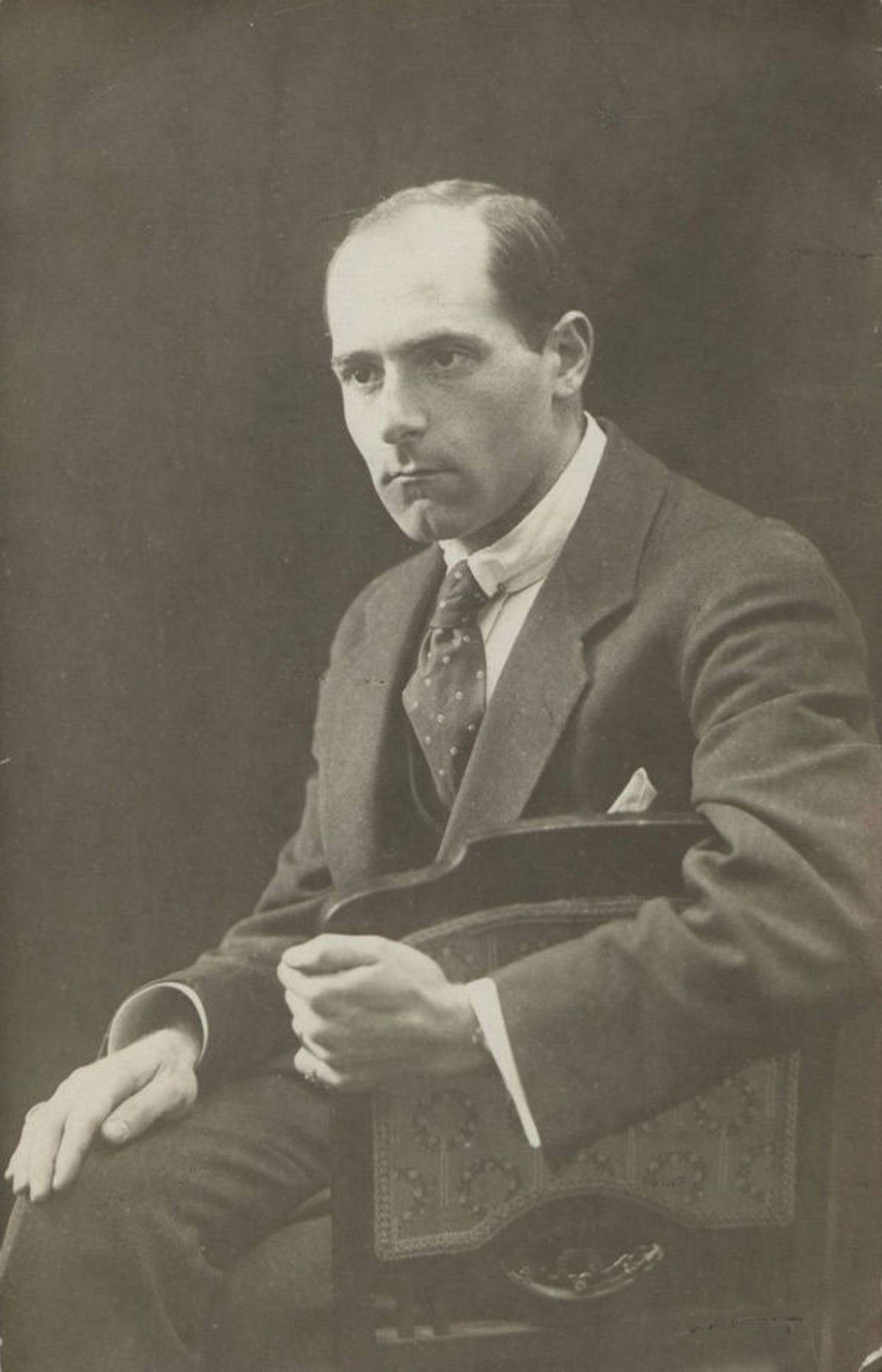
Ernest Brummer. The Cloisters Library and Archives
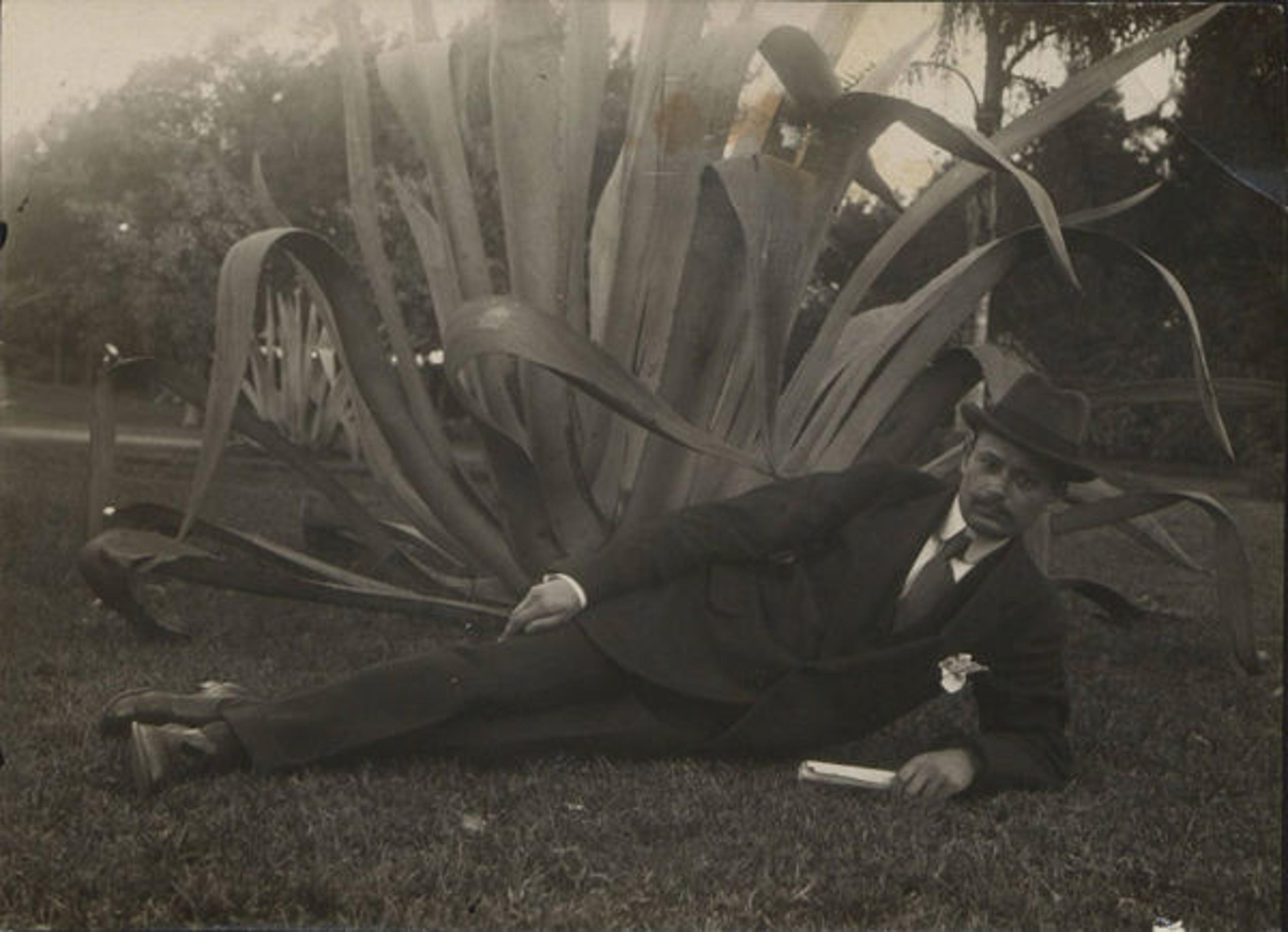
Imre Brummer, Cairo, Egypt, 1913. The Cloisters Library and Archives
On the eve of the First World War, Joseph and Imre settled in New York. By the early 1920s, Joseph Brummer was running an active gallery located in the heart of the art dealers' district on East 57th Street while also maintaining an office in Paris.
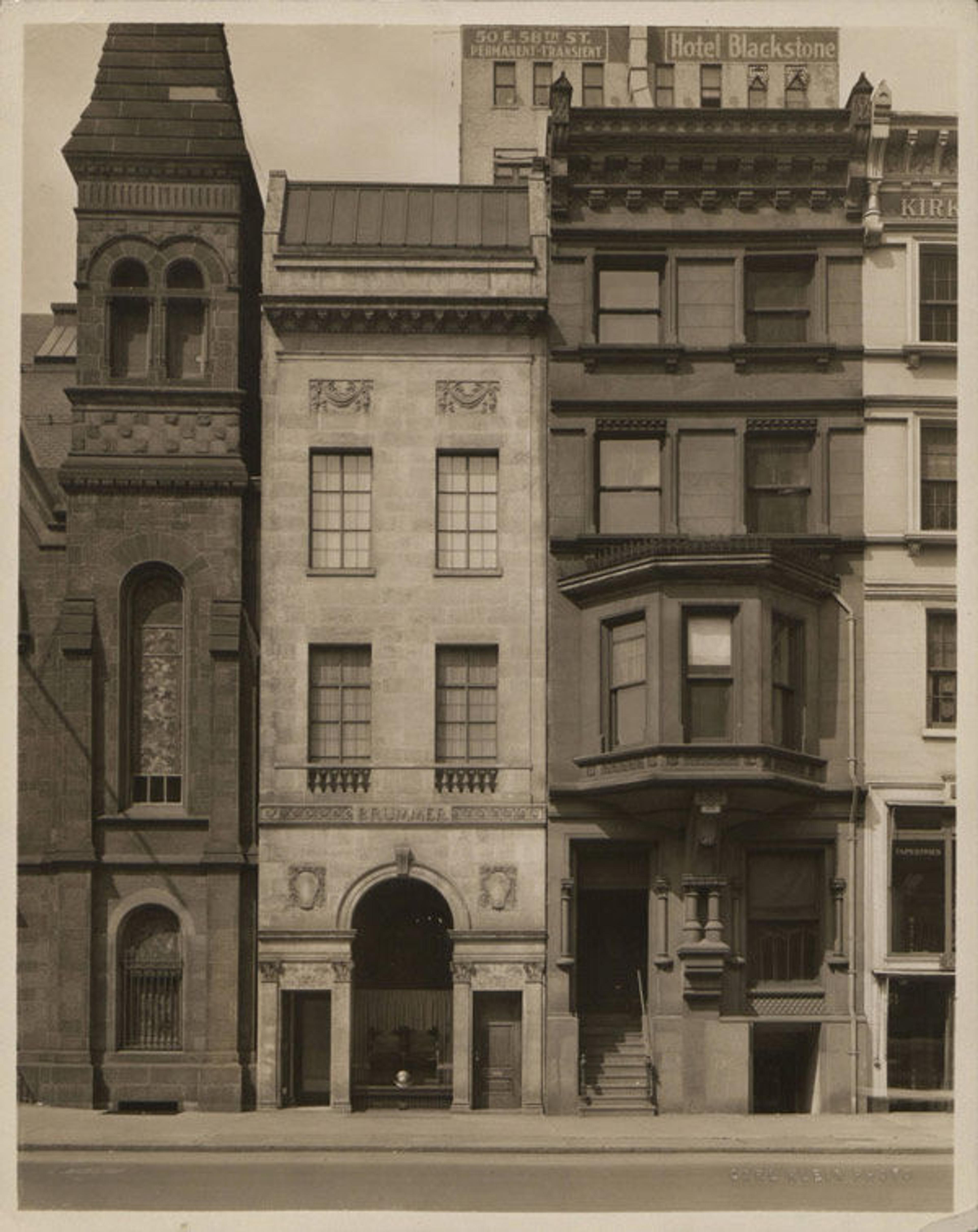
Exterior of the Brummer Gallery, East 57th Street, New York, ca. 1925. The Cloisters Library and Archives
Joseph Brummer died suddenly in 1947, leaving behind a unique collection of medieval pieces, including inventory from his business dealings and works that belonged to him personally. A significant segment of Brummer's holdings was sold at auction in April, May, and June 1949. However, the relationship formed between Rorimer and Brummer, which included regular correspondence concerning installations at The Cloisters and works of art on the market, made it possible for The Cloisters to make key acquisitions from Brummer's estate in the months just after his death.

The Treasury at The Cloisters in 1951. The Metropolitan Museum of Art Archives
Rorimer had realized that Brummer's collection contained precious works of art that rivaled the Morgan Collection in the Met's Main Building. Rorimer later remarked that the decision to form a treasury at The Cloisters was reached at this time because it had been the only opportunity since the late 1920s to enrich the collection with so many liturgical and secular objects of such high quality.

Chalice, paten, and straw, ca. 1230–50. German. Silver, gilded silver, niello, and jewels. The Metropolitan Museum of Art, New York, The Cloisters Collection, 1947 (47.101.26–.28)
Among the rarest works acquired from the Brummer collection are a golden chalice, paten, and straw (pictured above) created for the monks of St. Trudpert at Münstertal, near Freiburg im Breisgau at the edge of the Black Forest in Germany. Straws, such as the example above, were used to prevent the precious wine of the Mass from spilling and are exceedingly rare.
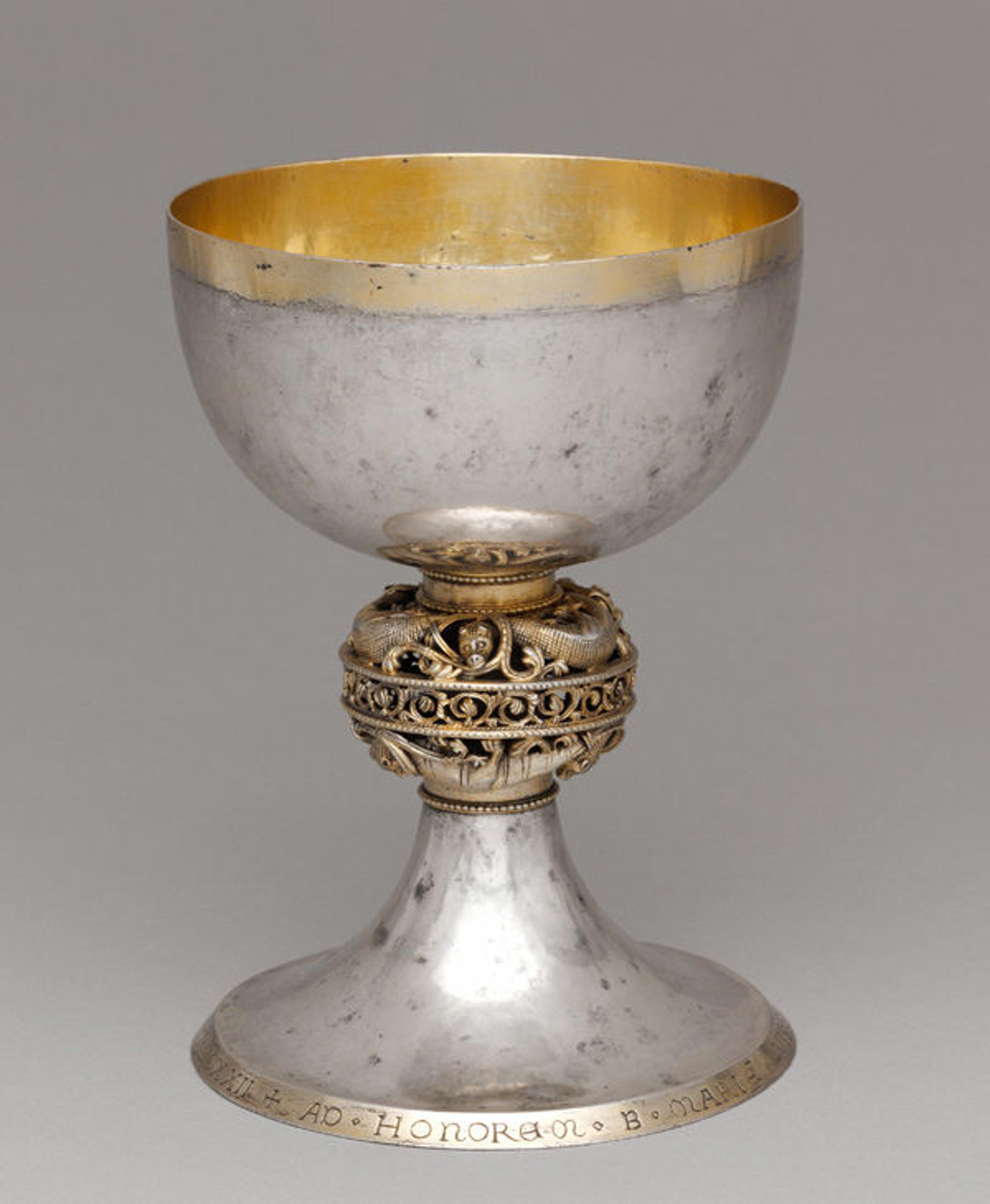
Brother Bertinus. Chalice, 1222. Made in possibly Meuse Valley, Northern Europe. Silver and silver gilt; Overall: 7 1/2 x 5 3/8 in. (19.1 x 13.7 cm). The Metropolitan Museum of Art, New York, The Cloisters Collection, 1947 (47.101.30)
Another chalice from the collection bears both the date 1222 and the name Bertinus, the goldsmith who created it.
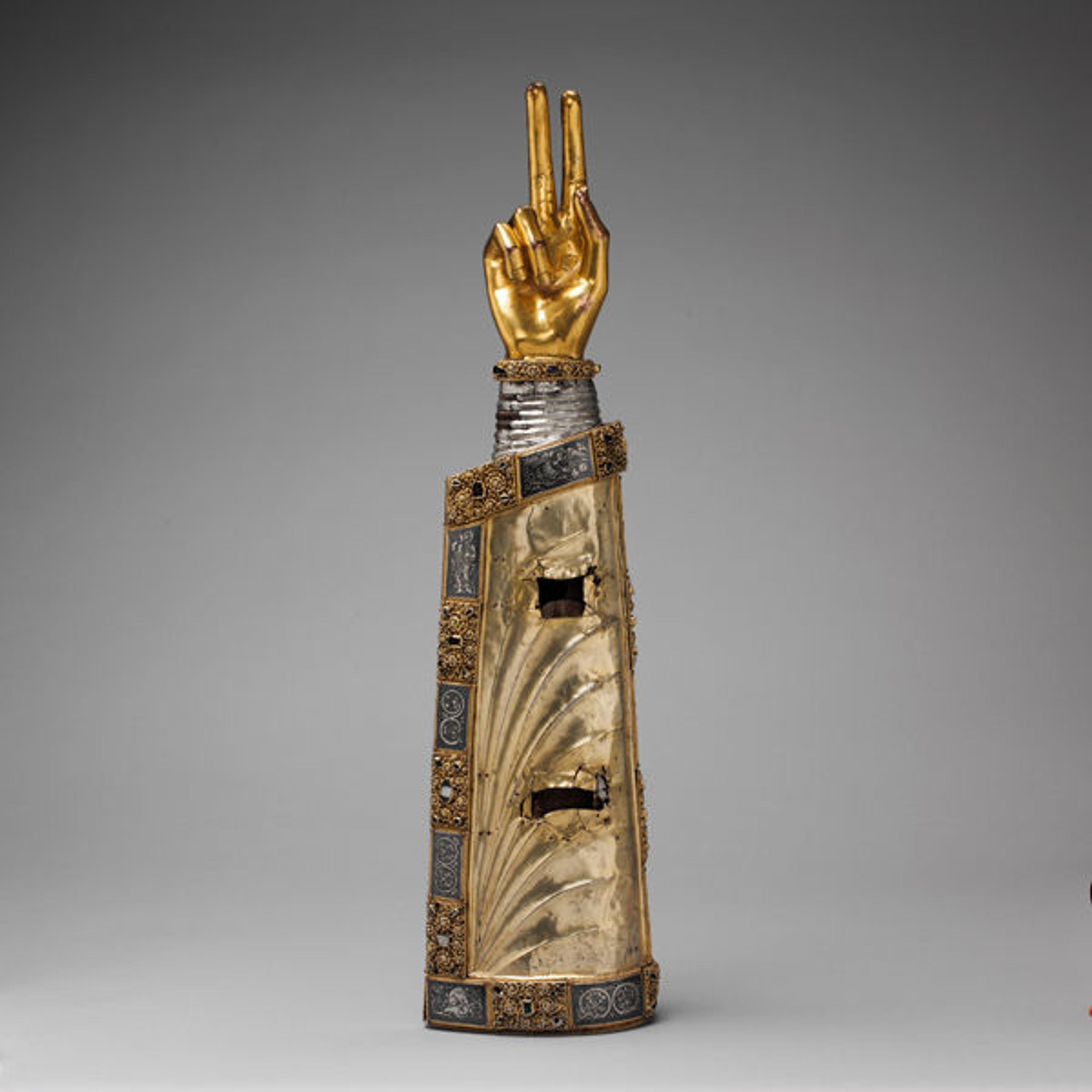
Arm reliquary, ca.1230. Made in Meuse Valley, South Netherlands. Silver and gilded silver over wood core, niello, and gems; 25 1/2 x 6 1/2 x 4 in. (64.8 x 16.5 x 10.2 cm). The Metropolitain Museum of Art, New York, The Cloisters Collection, 1947 (47.101.33)
The collection also includes a dazzling reliquary in the form of an arm raised in blessing that would have been used both at an altar and in processions.
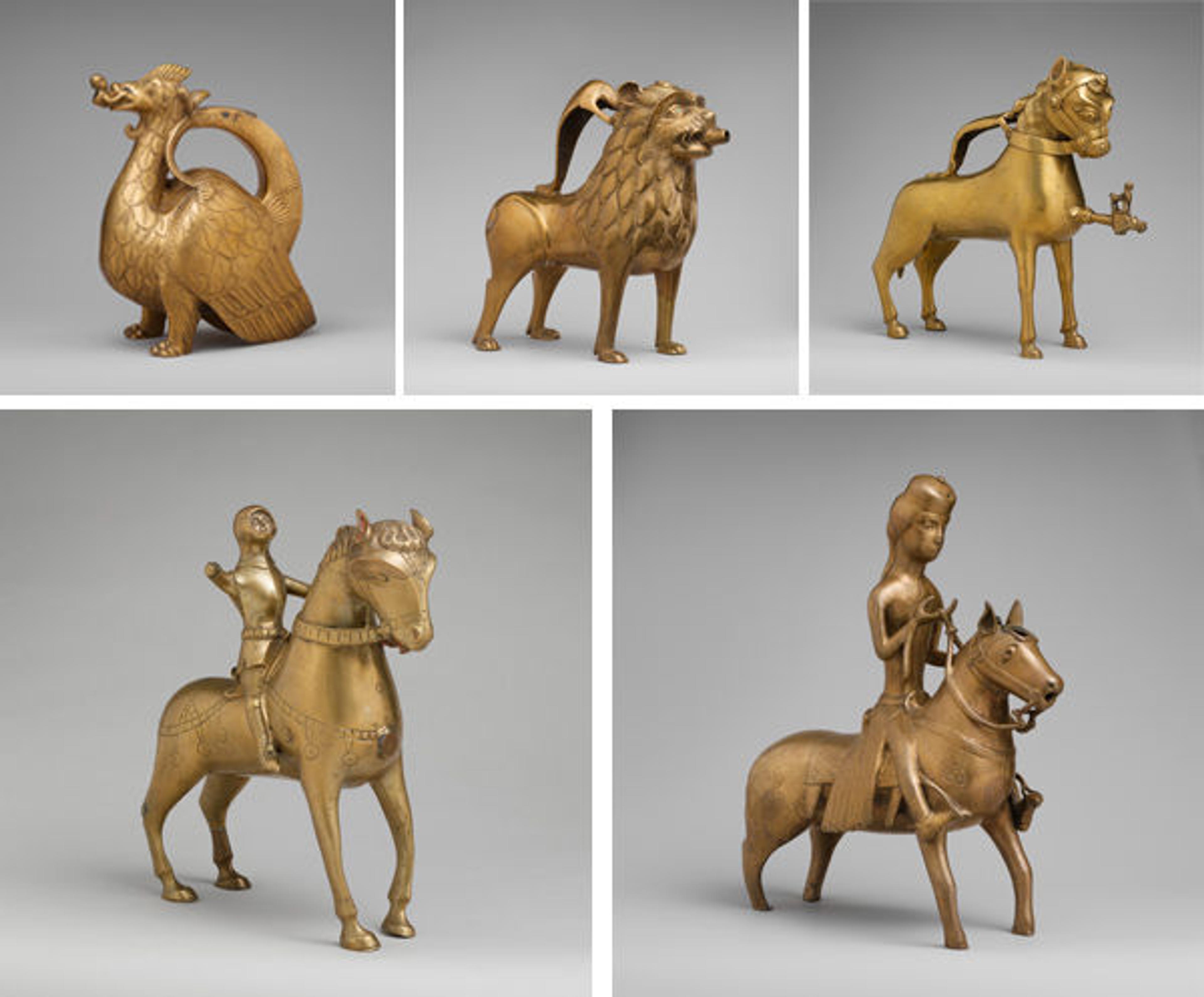
Top left to bottom right: Aquamanile in the form of a dragon, ca 1200. North German. Copper alloy, 8 3/4 x 7 1/4 in.(22.2 x 18.4 cm). (47.101.51); Aquamanile in the form of a lion, ca 1200. North German. Copper alloy with glass inlay, 8 3/8 x 7 1/4 x 4 3/8 in. (21.2 x 18.2 x 11.1 cm). (47.101.52); Aquamanile in the form of a horse, first half 15th century. German, Nuremburg. Copper alloy, 11 1/2 x 12 1/2 x 3 7/8 in.(29.1 x 31.6 x 9.8 cm). (47.101.53); Aquamanile in the form of a mounted man-at-arms, early 15th century. German, Nuremburg. Copper alloy, 10 5/8 x 10 x 3 3/4 in. (26.8 x 25.3 x 9.5 cm). (47.101.54); Aquamanile in the form of a falconer on horseback, 13th century. German, Lower Saxony. Copper alloy, 13 3/4 x 11 1/4 x 4 3/4 in. (34.7 x 28.5 x 12 cm). (47.101.55). All The Metropolitan Museum of Art, New York, The Cloisters Collection, 1947
Medieval secular objects from Brummer's collection include five aquamanilia used for hand washing (pictured above). These assume the form of fantastic creatures, lions, and knights on horseback.
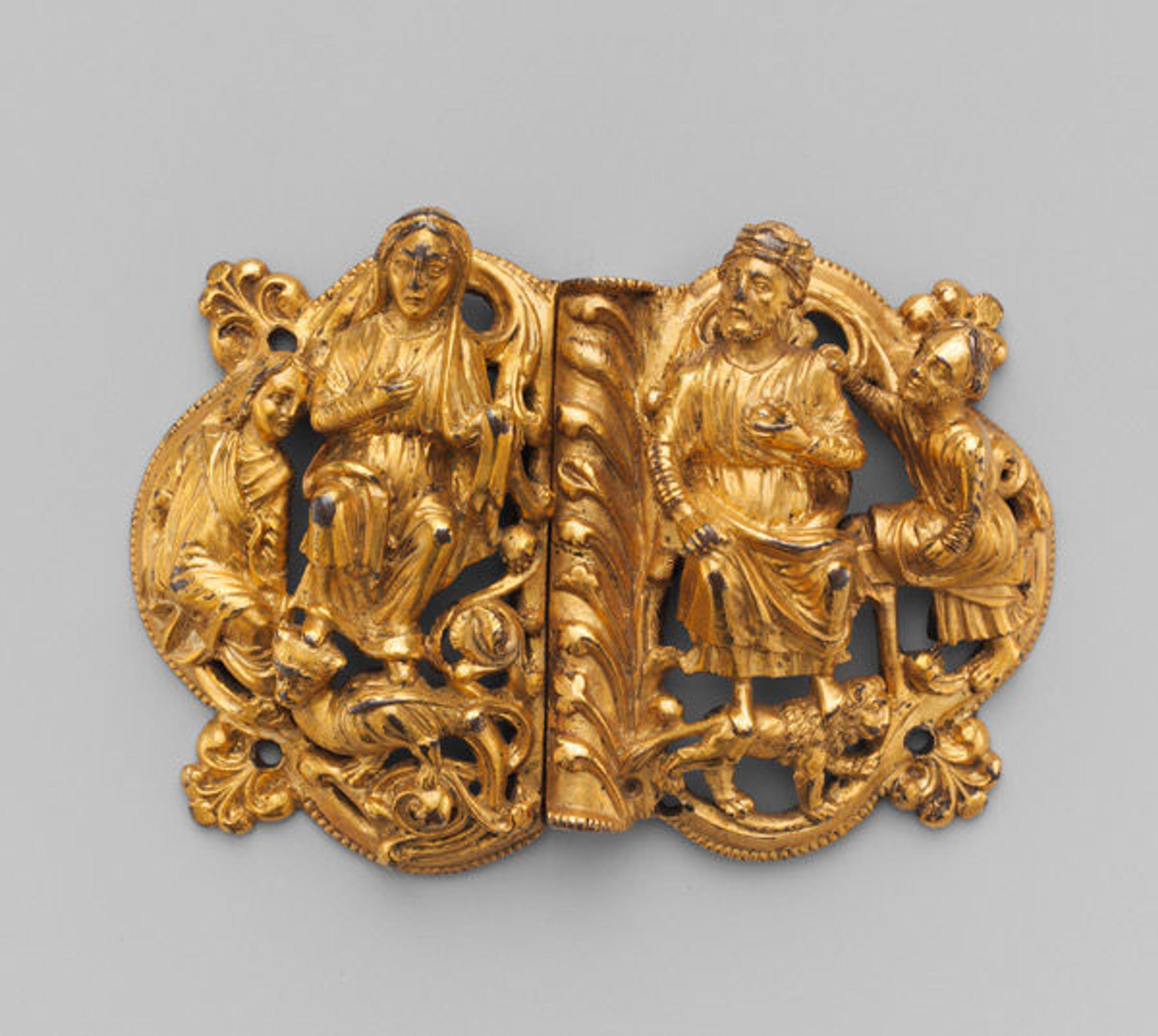
Clasp, ca. 1200. Made in Meuse Valley, South Netherlands. Copper alloy, gilding; Overall: 2 1/8 x 2 7/8 x 5/8 in. (5.4 x 7.3 x 1.6 cm). The Metropolitan Museum of Art, New York, The Cloisters Collection, 1947 (47.101.48a, b)
A gilded copper alloy clasp, likely made to close a girdle or cloak, was also acquired. The clasp's fine workmanship has been compared with works produced in the years around 1200 in the artistic circle of renowned medieval artist Nicholas of Verdun.
Today, more than 153 medieval works of art in the collection at The Cloisters can be associated with Joseph Brummer and his gallery. But it was the unparalleled group of objects acquired in 1947, thanks to the established rapport between Rorimer and Brummer, that can be credited with the formation of a treasury of medieval objects at The Cloisters.
